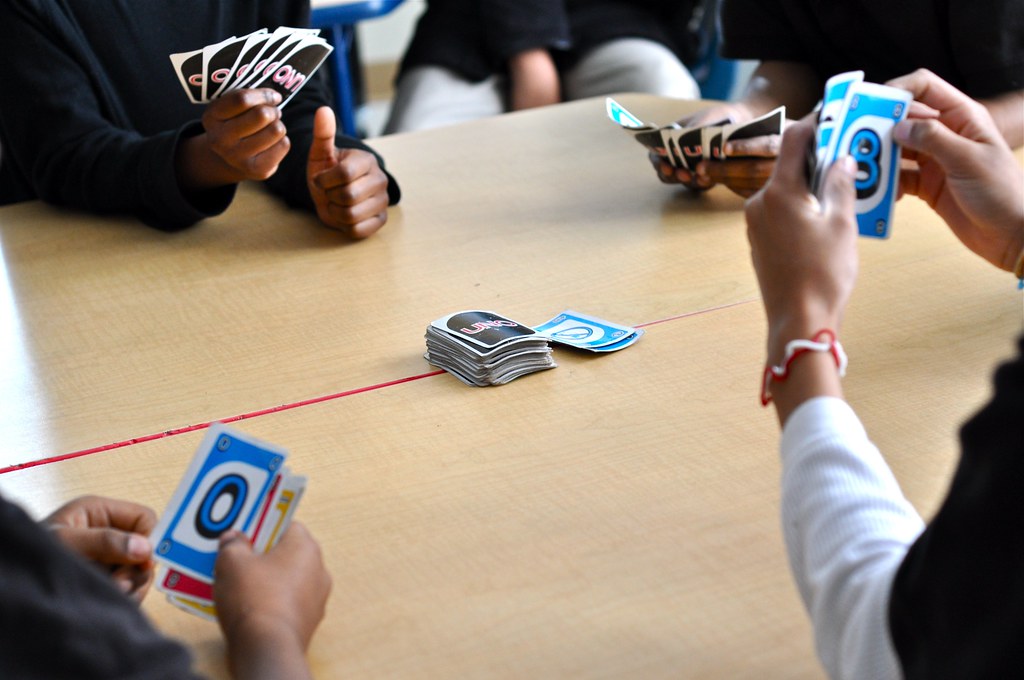We just started a project in 6th grade that has already been a lot of fun, using La Lotería Mexicana. I already knew I wanted to use it as a way to reinforce articles and the gender of nouns in a fun and hands on way, but while muddling through the PBL project design process and trying to connect that to the expensive curriculum that was just bought for me this year I realized this could be a good way to wrap up some of the curriculum objectives from Avancemos 1 into a project - specifically, Unit 1 objectives from Avancemos 1. After beginning this project, I already know I need to connect Lotería to more lessons and projects. It's been great to see the student engagement, from both my native speakers and others who have played this game with their families. (Here in San Diego, there's even a local brewery that has Lotería nights instead of Bingo nights.)
Here's our project so far. You can also see my project overview here: tiny.cc/proyecto-loteria-6
- We played La Lotería in class using this bilingual student version: Bilingual Bingo / Lotería Bilingue. It's nice for my mixed level class because we can read the rhyme out loud, and anyone who can understand it (usually my native speakers) can call out the word in Spanish. (¡La luna! ¡El sol!)
- We looked at a selection of creative Lotería sets in class to glean examples of different types of words. Most of my students were sorting nouns by gender and by type of word (person, animal, etc.) but my native speakers were categorizing words by their stressed syllables. (We've been looking at sílabas tónicas in order to help with correct accents. It's the first time this year I've heard these kids whining that the work is too hard, so I think I've finally manged to find a task at their level!) Here are the Loterías we looked at - albeit selectively. Your use of these Loterías may depend on how comfortable you and your students are with the human body, alcohol use, and racial commentary.)
- A traditional set of Don Clemente Lotería cards from a local Mexican supermarket
- Lotería Clemente Jacques, 1930s (México)
- Lotería Clemente Jacques, 1960s (México)
- Lotería de Posada (Arte de José Guadalupe Posada, 1852-1913)
- Lotería Moderna de Teresa Villegas (This project was a great excuse to buy her gorgeous Loteria
book.)
- Lotería los Compadres (Moderno de México)
- Lotería 50 nombres para la muerte (Erik de Luna, México)
- Lotería Huasteca (Art of the Huastec people, Alec Dempster & Arturo Castillo Tristan)
- Lotería Star Wars (Chepo Peña)
- Lotería de Fotografías de México (Jill Hartley)
- We'll also be reading this book, which is a sweet bilingual story. I would start the project with this book normally, but I ordered it right after beginning the project.
- We will be creating our own Lotería cards that share something about ourselves. Students will choose objects that represent something about themselves, and the "hints" on the back will be sentences about themselves, using the language skills we have been practicing. I've created some examples, like this card that features a baby teacher with her baby cat.
I can't wait to see what my students come up with!
(Disclaimer: Links to Amazon products are provided via Amazon's Associates program. I receive some money if you end up buying these products through the ads on this page. I'm grateful for this opportunity through Amazon, but also through their Prime shipping which allowed me to come up with this project and pretty immediately get the books and games I needed to start it right away with my students!)







